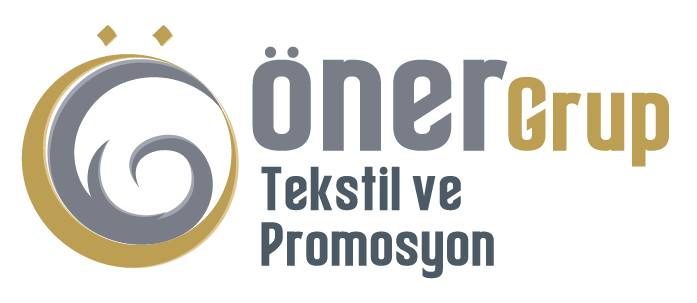Building upon the foundational insights from How Animals Inspire Creativity in Music and Games, it becomes evident that animal behavior extends its influence far beyond entertainment. From visual arts to ritualistic practices, understanding the instincts and actions of animals opens a vast landscape for creative exploration, fostering innovations across diverse artistic disciplines. This article delves into the nuanced ways animal behavior informs and enriches our creative endeavors, revealing a deeper connection that transcends simple imitation.
1. The Evolutionary Roots of Animal-Inspired Creativity
Historical interactions between humans and animals have laid a rich foundation for artistic expression rooted in observation and mimicry. Early societies often incorporated animal motifs into their rituals and visual arts, recognizing the symbolic power of animal behaviors. For example, prehistoric cave paintings depicting bison or deer likely reflected not only hunting practices but also spiritual beliefs associated with these creatures.
Moreover, the mimicry of animal sounds and movements in dance and storytelling served as fundamental techniques for transmitting cultural values. The use of animal masks in traditional ceremonies, such as African or Native American rituals, exemplifies how observing and embodying animal traits fostered a heightened sense of identity and creativity. These early engagements created a blueprint for developing more sophisticated artistic techniques inspired by animal behavior.
2. Animal Behavior as a Source of Abstract Artistic Concepts
Artists and performers often interpret animal instincts—such as migration, social bonding, or predatory hunting—as powerful metaphors. For example, in visual arts, migratory patterns can symbolize journeys or transitions, while social structures within animal groups inspire explorations of community and hierarchy. The hunting strategies of predators like wolves or cheetahs have been depicted to explore themes of survival, agility, and strategy.
| Animal Behavior | Artistic Metaphor | Example |
|---|---|---|
| Migration | Journey, transition, change | Impressionist paintings depicting migration lines |
| Social Bonding | Community, unity, hierarchy | Sculptures inspired by ant colonies or bird flocks |
| Predatory Hunt | Strategy, agility, pursuit | Performance art mimicking predator-prey dynamics |
3. The Psychological Impact of Animal Behavior on Human Creativity
Observing animal reactions can evoke deep emotional and cognitive responses in humans, often leading to new artistic ideas. For instance, watching a flock of starlings perform murmuration can inspire visual art installations that simulate collective movement and chaos. Similarly, the instinctual behaviors of animals—like nesting or grooming—can serve as metaphors for intimacy, care, or social bonds in storytelling and character design.
Psychologists and artists alike recognize that animal behaviors act as powerful triggers for emotional resonance. “By studying the instinctive actions of animals,” notes Dr. Jane Harper, a cognitive ethologist, “creators tap into universal themes of survival, community, and adaptability, which are essential in compelling storytelling.”
4. Non-Obvious Artistic Expressions Derived from Animal Behavior
Beyond mainstream arts, animal behavior influences lesser-known crafts and traditional practices. For example, certain dance forms mimic the movements of animals—like the Japanese “Odogi” dance inspired by cranes or the Native American “Shoshone” dance echoing antelope movements. Ritualistic arts often incorporate animal gestures and calls as symbolic elements, creating a rich tapestry of cultural expression.
Additionally, animal communication signals—such as gestures, calls, and body language—have profoundly impacted modern multimedia art. For example, silent films or contemporary dance performances often utilize animal-inspired gestures to convey emotion without words, emphasizing the universality of non-verbal communication.
5. Cross-Disciplinary Perspectives: Animal Behavior in Scientific and Artistic Collaboration
Interdisciplinary collaborations between scientists and artists have unlocked new avenues for interpreting animal behavior. Ethologists and designers work together to develop bio-inspired art installations that showcase animal movement and communication. For example, robotic sculptures mimicking flocking birds or schooling fish reveal the potential of bio-mimicry in art.
An example includes the “Flock of Birds” installation by artist Theo Jansen, where kinetic sculptures simulate flocking behavior, merging scientific understanding with creative expression. Such projects not only educate but also inspire audiences to see animals as dynamic sources of innovation.
6. Ethical Considerations and Responsible Inspiration from Animal Behavior
While drawing inspiration from animal behavior can lead to innovative art, it is crucial to maintain ethical standards. Exploiting animals or misrepresenting their actions can undermine the authenticity and respect owed to living creatures. Responsible artists and creators ensure that their work does not harm animals or distort their natural behaviors for sensationalism.
“Authentic representation and respect for animal integrity deepen the impact of animal-inspired art, fostering empathy and understanding.”
7. Returning to the Parent Theme: Connecting Animal Behavior to Broader Cultural Creativity
Understanding animal behavior enhances our appreciation of how animals influence not only specific art forms like music and games but also the broader spectrum of cultural creativity. Recognizing the symbolic and functional roles of animals in various societies informs contemporary artistic practices, encouraging creators to develop more authentic and meaningful work.
Artists and innovators can further explore this wellspring of inspiration by studying animal social structures, movement patterns, and communication signals. Such explorations foster a richer, more nuanced approach to integrating animal behavior into artistic projects, ultimately deepening the cultural dialogue between humans and the natural world.
By aligning scientific understanding with artistic expression, we continue to unlock new dimensions of creativity rooted in the intricate behaviors of animals—an enduring source of inspiration that broadens our cultural landscape.
